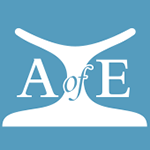Thomas Eric Peet
British Egyptologist and archaeologist; he was born in Liverpool, 12 Aug. 1882, son of Thomas P. and Salome Fowler; he was educated at Merchant Taylors’ School, Crosby, and afterwards studied Mathematics and Classics at The Queen’s College, Oxford; Jodrell Scholar; Craven Fellow, 1906, with which he went to Italy to study archaeology; Pelham Student, British School in Rome; he excavated in Italy, 1909, and afterwards published his first major work, The Stone and Bronze Ages in Italy and Sicily; it was through his friendship with MacIver that he first became interested in and then entered Egyptology, and Newberry arranged for him to work under Garstang at Abydos and also took him with him to the Delta, 1909; he transferred to the EEF the same year, and worked at Abydos, 1909-13, at first under Naville but later independently; at this time he married Mary Florence Lawton, 1910, and was made Lecturer in Egyptology in the University of Manchester, 1913-28; he met Gardiner in the library of Cairo Museum and afterwards began to study Egyptian with him, 1911, but was in fact mainly self-taught in this as in Coptic and Demotic; he became a philologist of high calibre and made important contributions to the study and translation of papyri dealing with mathematics and with the tomb-robberies at Thebes under the late Ramesside kings; he served during the First World War in the RASC in Salonica and in France; after the war he was made Director of the EES excavations and although this work was not really his forte he inaugurated the important series of excavations at El-Amarna with the help of Newton 1921; he was made Laycock Student in Egyptology at Oxford, 1923, and Brunner Professor of Egyptology in Liverpool University, 1920-33; he became Reader and Professor designate in Egyptology at Oxford, 1933-4, but died before the latter appointment was confirmed; Fellow of The Queen’s College, Oxford, 1933; Peet was also the editor of the Liverpool Annals of Art and Archaeology from 1921 onwards, and the JEA from 1923, to which he contributed many articles and reviews; he delivered a course of lectures at Cairo University, 1929, and the Schweich lectures for the British Academy the same year; his bibl. lists 75 books and articles on Egyptological subjects but is not complete; he wrote The Cemeteries of Abydos, pt. i with E. Naville, 1914, pt. ii, 1914, pt. iii, with W. L. S. Loat, 1913; The Inscriptions of Sinai ..., pt. i fol., with A. H. Gardiner, 1917; The Mayer Papyri A. and B, Nos. M. 11162 and M. 11186 of the Free Public Museums, Liverpool, 1920; Egypt and the Old Testament, 1922; The Rhind Mathematical Papyrus, British Museum 10057 and 10058, 1923; The City of Akhenaten I, with C. L. Woolley and others, 1923; I Papiri ieratici del Museo di Torino: Il Giornale della necropoli di Tebe, with G. Botti, 1928; The Great Tomb-Robberies of the Twentieth Egyptian Dynasty, 1930; A comparative Study of the Literatures of Egypt, Palestine and Mesopotamia (Schweich Lectures), 1931; also an inaug. lecture, The Present Position of Egyptological Studies, 1934, and chapters in the Cambridge Anc. Hist.; his papers and drawings are in the Griffith Institute, Oxford; he died in Oxford, 22 Feb. 1934.
